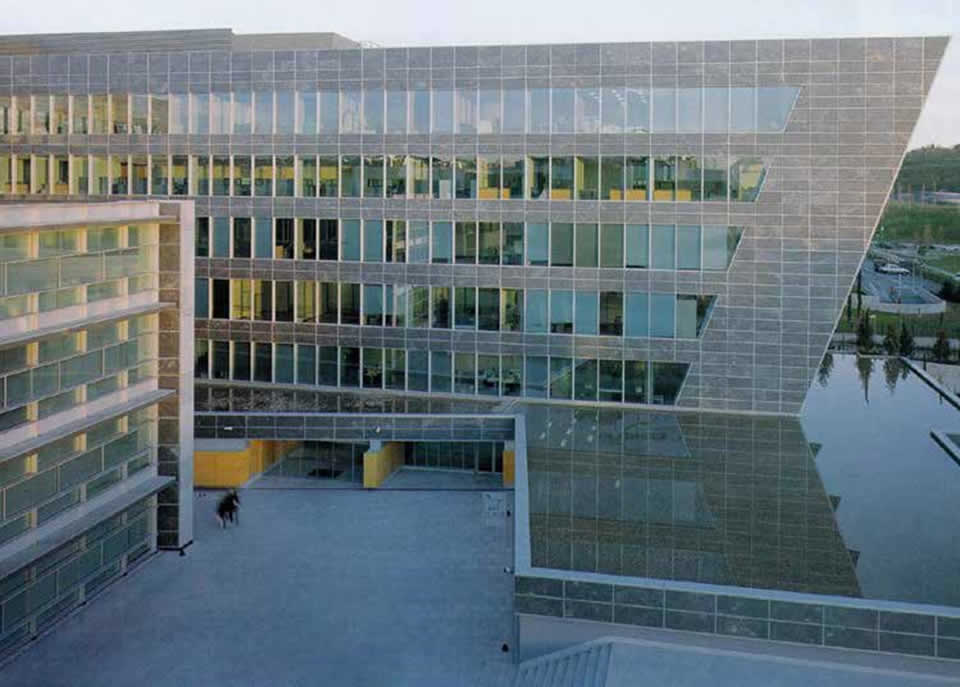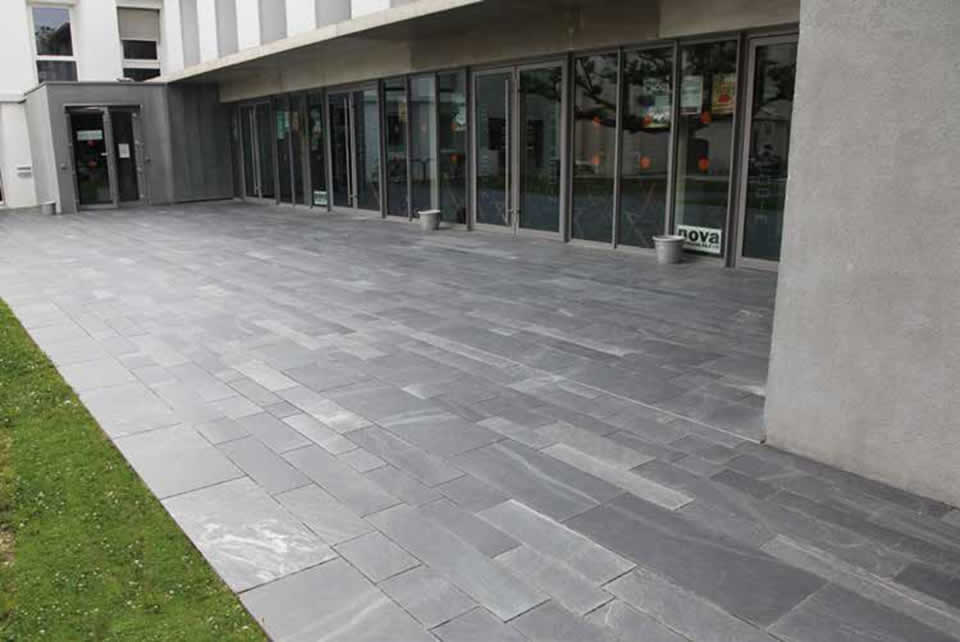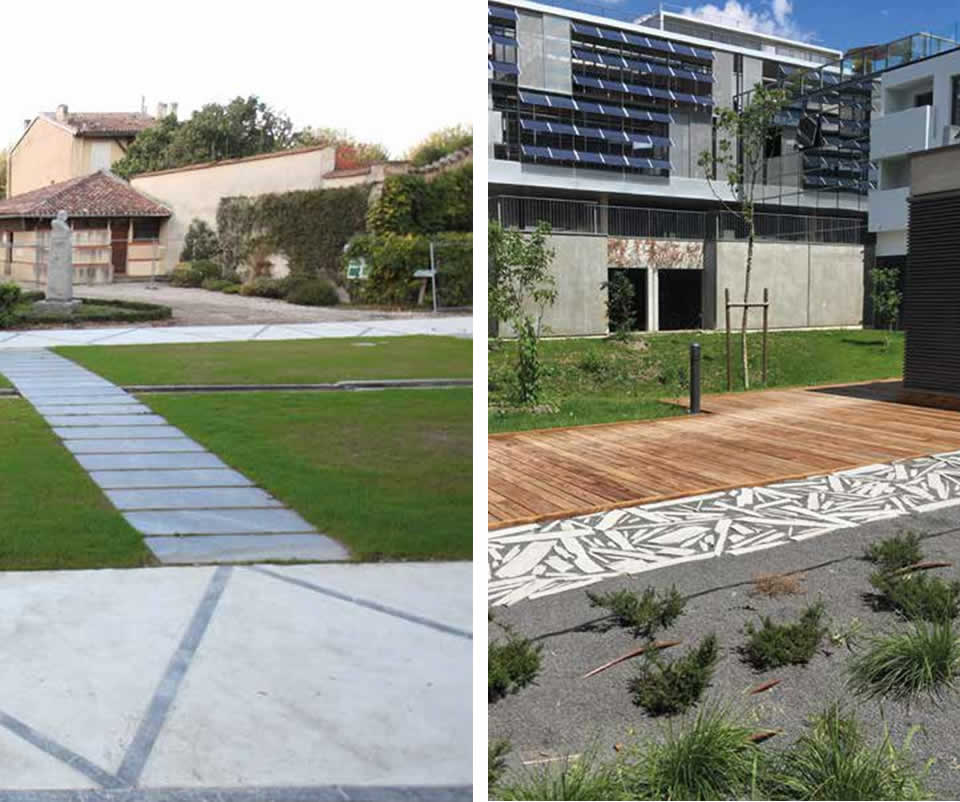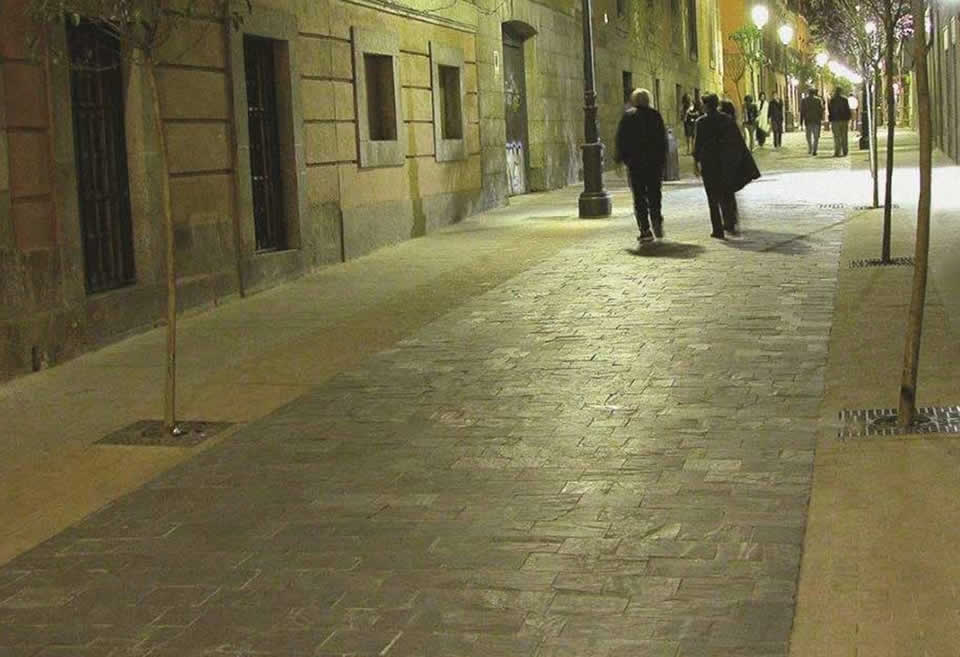Technical Data > Technical data Bernardos phyllite > Products subject to standardised European norms
PRODUCTS MADE OF SLATE AND NATURAL STONE FOR DISCONTINUOUS ROOFS AND LAMINATES
Defined as per UNE EN 12326-1:2014
Slate is a rock derived from original argillaceous sedimentary rocks including sediments from volcanic ash. Its petrographic composition can be classified within a range which starts at the limits of metamorphic and sedimentary formations and ends in the epizonal-metamorphic phyllite formations.
Note 1: Slate is mainly composed of phyllosilicates in exfoliation planes resulting from a schistosity derived from a low to very low grade metamorphism.
Note 2: Slate is different from a standard sedimentary rock which inevitably foliates in a sedimentation or stratification plane.
Note 3: The metamorphism can be due to tectonic or a lithostatic compression, or a combination of both.
Roofing slate: rock used for external roofs and coverings which can be easily divided into thin slabs along the foliation plane.
Carbonate slate for roofing: rock used for external roofs and coverings which contains phyllosilicates and a minimum carbonate content of 20% and which presents a significant schistose foliation.
In the context of these definitions, Bernardos slate corresponds to the category of slate for roofing with tectonic compression, which has the highest quality and durability for roof construction.
The range in the fabrication of coverings is as follow:
Colours: grey.
Finish: natural texture.Finish: natural texture.
Shapes: rectangular, square, irregular, spade, ogive, rhombus, crescent, shuppen, squared with cut edges, hexagonal.

NATURAL STONE PRODUCTS. MODULAR TILES.
Defined as per UNE EN 12057
Flat square or rectangular shape made of natural shape with standard dimensions, usually ≤610mm, which is obtained after cutting or after foliation (thickness ≤12mm)
Colours: grey.
Finishes: natural surface, sawn, honed, flamed, brushed.
Shapes: rectangular, squared and irregular shape.
NATURAL STONE. SLABS FOR WALL COVERING.
Defined as per UNE EN 14069.
Slabs cut to become part of an internal or external wall covering and the surface finish of vaulted roofs, fixed to a structure either by mechanical means or through mortar or adhesive material.
Colours: grey.
Finishes: natural surface, sawn, honed, flamed, brushed.
Shapes: rectangular, squared and irregular shape.


NATURAL STONE PRODUCTS. TILES FOR PAVING AND STAIRS.
Defined as per UNE EN 12058.
Tiles for paving:
Flat natural-stone cut or sliced into slabs of a thickness ≥ 12 mm.
Tiles for stairs:
Flat natural-stone cut or sliced into slabs of a thickness ≥ 12 mm (except for the risers) used for the horizontal part (tread) and the vertical part (riser) of a step.
Colours: grey.
Finishes: natural surface, sawn, honed, flamed, brushed.
Shapes: rectangular, squared and boulder-shaped.

NATURAL STONE PRODUCTS. TILES FOR EXTERNAL PAVING.
Defined as per UNE EN 1341.
Units of natural stone, cut or sliced into slabs, used as paving material, with a nominal width exceeding 120mm and usually exceeding twice this amount in thickness. The unit is placed on a structure through mortars, granular or adhesive other supporting materials.
Colours: grey.
Finishes: natural surface, sawn, honed, flamed, brushed.
Shapes: rectangular, squared and boulder-shaped.

NATURAL STONE CURBS OR BORDERS USED FOR EXTERNAL PAVING.
Defined as per UNE EN 1343:2013.
Piece with a length exceeding 300mm, usually used as curb for paths or pavements.
Colours: grey.
Finishes: natural surface, sawn, honed, flamed, brushed.
Shapes for transversal pieces.

NATURAL STONE SETTS FOR EXTERNAL PAVING.
Defined as per UNE EN 1342:2012.
Units of natural stone, cut or sliced into slabs, used as paving material, in which the nominal width does not exceed twice the thickness, and the length does not exceed twice the width.
NOTE: The minimum thickness is 40mm.
Colours: grey.
Finishes: natural surface, sawn, honed, flamed, brushed.
Shapes: rectangular, square.

